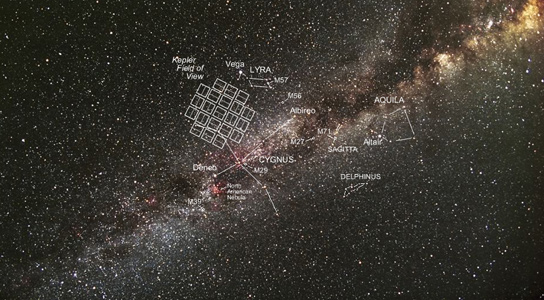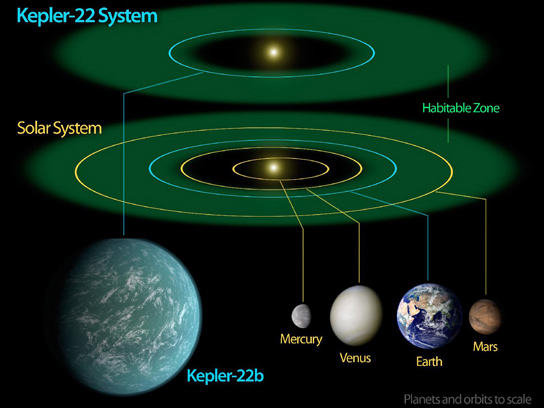Chemistry Might Influence Habitable Zones Around Extrasolar Systems
February 2, 2012

Trace elements in extrasolar systems might influence the evolution of habitable zones around their stars, where carbon-based life as we know it might dwell. Most stars are made up of hydrogen and helium gas, but there still remain traces of heavier elements, like metals, that are inherited from the remnants of older stars or forged by stellar fusion.
Scientists are able to detect what elements a particular star possesses by looking at the light it emits, which comes in a variety of different wavelengths. The habitable zone of a star is defined by whether liquid can survive on its surface, since all life as we know it exists where there is water. If the exoplanet is too far from its star, then the water becomes frozen. If it’s too close, it might boil away.

Patrick Young, a theoretical astrophysicist and astrobiologist at Arizona State University, and his colleagues generated computer models for how the variation in eight elements, carbon, oxygen, sodium, aluminum, silicon, magnesium, calcium, and titanium, might affect the behavior of F, G, and K-type stars, which are the most similar to Sol.
A higher opacity of stable objects traps the energy of fusion more efficiently and results in a larger radius, cooler star, states Young. More efficient use of energy means that the stellar furnace can proceed slower, resulting in a star with a longer lifetime.
 The scientists found that the presence of calcium, sodium, magnesium, aluminum and silicon had small but significant effects on a star’s evolution. Higher levels of these resulted in cooler, redder stars. Oxygen also played a key role to alter a star’s lifetime and its habitable zone.
The scientists found that the presence of calcium, sodium, magnesium, aluminum and silicon had small but significant effects on a star’s evolution. Higher levels of these resulted in cooler, redder stars. Oxygen also played a key role to alter a star’s lifetime and its habitable zone.Oxygen-depleted stars had a lifetime of 3.5 billion years, while oxygen-rich stars had one of 8.5 billion years. Earth will remain habitable for another billion years, for about 5.5 billion years in total. After that, the sun will become too hot. It took complex cellular life 3.9 billion years to evolve, so low-oxygen stars aren’t suitable candidates for finding extrasolar life.
Kepler has detected worlds in the habitable zone around their stars. Certain key minerals, such as magnesium silicate, silicon dioxide, magnesium orthosilicate, and magnesium oxide in planets, which are a good for life to arise, come from an appropriate carbon-oxygen and magnesium-silicon ratio in their parent stars.
No comments:
Post a Comment